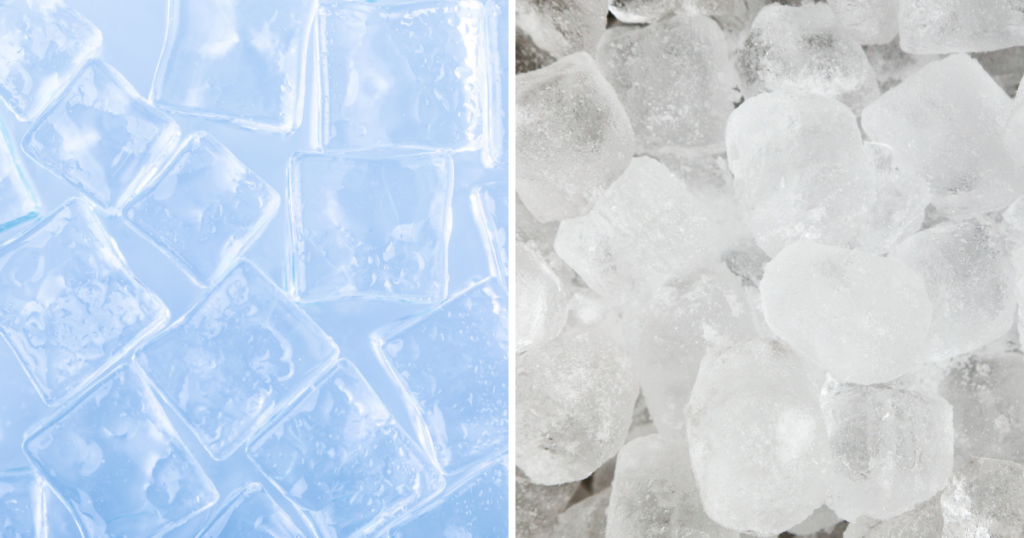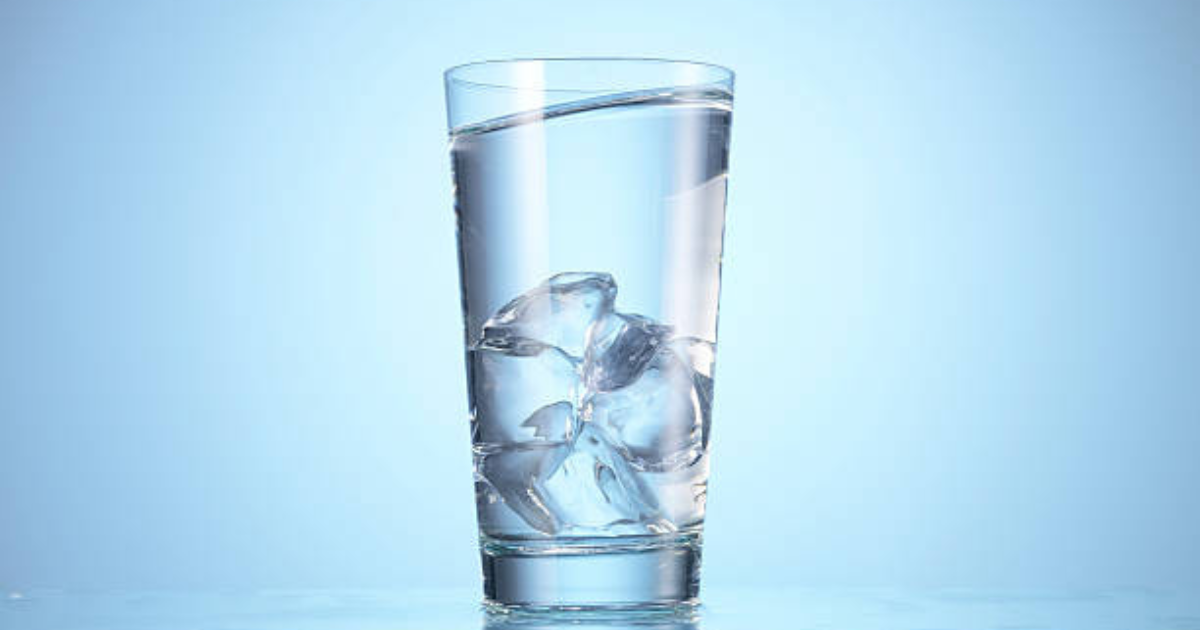It’s been one hot season already! If you’re anything like us, this summer, you’ll be putting everything on ice, whether it be a whiskey sour or a washcloth. With Memorial Day approaching you’ll want to serve your guests clear, not cloudy, ice, if you’re planning to host a gathering. We know what you’re thinking, you probably don’t need anyone telling you how to make ice. I mean, it doesn’t get much simpler than filling the tray with water and placing it in the freezer for a few hours. But if your ice isn’t coming out clear you’d hope, it might be good to start looking up ways to make clear ice before the party starts. Seriously though, clear ice is superior for a number of reasons we will go over. Keep reading for all the tips and tricks on how to make clear ice cubes!
Why Clear Cubes?
You’re probably wondering, “Hey Discount Filters, what’s the big deal with having clear ice anyway?” Let’s dig into this topic further.
Clear Ice Cubes vs Cloudy Cubes

- Clear ice lasts longer, melts more slowly
- Cloudy ice melts faster
- Clear ice tastes better
- Cloudy ice sometimes has a flavor due to it being less pure
- Clear ice is purified
- Cloudy ice has impurities trapped in it
- Clear ice has a restaurant quality look and feel – cloudy ice does not
Clear ice cubes are superior in several ways, stemming from the high level of purity that consumers experience when using clear ice. Also, clear ice isn’t achieved simply by purchasing filtered water at the store. You have to use certain techniques at home to make sure the water is ultra-pure.
What Makes Ice Cubes Cloudy?
As mentioned above, cloudy ice cubes are cloudy for a reason. It’s because they have impurities trapped inside the ice. Two types of common impurities found in ice are minerals and particulate matter from the air.
Ensuring the purity of your drinking water before it is frozen is essential for getting clear ice.
What is Found in Cloudy Ice Cubes?
There are a number of minerals and naturally-occurring trace elements that could be hiding in your cloudy ice cubes. These include:
- Calcium (mineral)
- Magnesium (mineral)
- Potassium (mineral)
- Sodium (mineral)
- Phosphorous (mineral)
- Copper (trace element)
- Chromium (trace element)
- Iron (trace element)
- Zinc (trace element) and more…
While the above elements and minerals are good in healthy amounts and contribute to a number of good things like bone strength and cellular growth, there are also toxins found in tap water:
- Fluoride
- Fracking Fluids
- Chlorine
- Nitrates
- Lead
- Arsenic
- PFAS and more…
There’s a health benefit to getting your water as pure as possible. But water treated with chemicals to make it safer to drink, like tap water, means purifying chemicals contribute to the cloudiness!
Reducing water to its purest form won’t necessarily prevent exposure to minerals or toxins, but it can help prevent you from putting some of the bad stuff into your body.
Restaurant Quality Experience
Having clear ice cubes for drinks gives you a restaurant quality experience. It lends itself to a number of summer activities like hosting a BBQ for friends or enjoying a quiet drink alone on your back porch, listening to the sounds of nature. Regardless of what you choose to do with your ice, there’s something about clear ice cubes that invoke the ambiance of a restaurant at home. When it comes to making ice cubes, let’s get one thing clear. Cloudy cubes just won’t do.
Water Preparation Instructions
Now that you know why clear ice is an important addition to your summer fun, let’s tackle how to make it! The secret is in the water, so before we get into methods of freezing ice, let’s look at some simple things you can do to treat your water at home:
- Step 1: Use distilled water
- Step 2: Boil water to allow excess air to escape the water
- Step 3: After boiling, cover water and let it cool
- Step 4: Boil again and cool before freezing
So, that’s it, right? End of story?
No, not by a long shot. This is just the start of your clear ice adventure. So strap in and get ready to select the best method to freeze your water!
How to Make Clear Ice Cubes
You now understand why clear ice cubes are better – check. And you’ve prepped your water – check. The obvious next step is to freeze it. But before you start pouring it into the ice tray and placing it into the freezer, you still have to decide the best way to freeze your ice. Usually, that’s done by directional freezing.
Directional freezing is a method that keeps a cloudy center from forming in your otherwise clear cube. It’s impossible to remove all of the debris that would cause an ice cube to be cloudy. As such, otherwise purified ice cubes end up with a pool of debris in the middle causing a cloudy center. By strategically selecting your ice tray, you can ensure all of the debris is pushed out from one direction to the other. Hence the name, directional freezing, which offers the chance at your clearest cube.
Here are a few options:
Option #1. Use a Cooler
Clear a space in your freezer to hold a personal-sized cooler. Preferably, choose a cooler that has a stiff, rigid plastic top and sides. The cooler needs to be able to sit and open in the freezer.
After you’ve selected the cooler and cleared some space, fill the cooler up to its halfway point and place it in the freezer with no top on.
When you use this method, harvest the ice block before it has completely frozen.
As described above, the particles in the center will be the last part to freeze. By pulling the ice out before the cloud-makers have a chance to freeze inside of it, you can carefully remove the clear ice block and dump the impurities.
Option #2. Use Batches
If you don’t have enough room in your freezer for a cooler of any type, you can use a silicone ice tray and baking dish as a nifty hack!
Using a needle, poke holes into your silicone ice tray and place it in the center of a baking dish that’s just a little bit larger.
Try to leave about an inch between the silicone tray and the bottom of the pan. Next, fill the whole contraption with water.
Using the same methods as Option #1, harvest the cubes before they’ve fully set. The clear cubes will pop out of the silicone tray and the excess water will rush out of the bottom of the cube, into the pan.
Option #3. Get Salty
Using a similar method as above, take a cooking dish and pour an inch or two of water in it. Add two tablespoons of salt to the water and put the pan in the freezer.
Check on the water after an hour. Once the water is very cold, remove the pan from the freezer and set it aside.
Now, fill your silicone ice tray with prepared water, but this time don’t poke holes in it! Place the ice tray inside the baking dish — it should float.
Stick the whole thing back into the freezer to freeze into clear ice cubes.
The science here is that the salt water will cause the cubes to freeze very slowly from the bottom up, forcing impurities out the top.
Option #4. Give Up and Go Reverse Osmosis
If you’ve given up on directional methods of freezing ice, your next best bet for the clearest cubes money can buy is to get your hands on a reverse osmosis purification system.
Reverse Osmosis systems are widely considered top of the line purification systems for removing dirt and debris, giving you the cleanest water possible! If you use an RO system, you can try simply just freezing your water. However, there’s no guarantee that a fully set cube won’t have a small bit of cloudiness to it.
Option #5. Filtered Water is Key
Filtered water is the key to success when it comes to making your cubes as clean as possible.
There are a number of types of filters and purifications systems that families can invest in for the home. Most of them require filters and filter maintenance. Browse our selection of premium water filters that not only provide clearer drinking water but also ensure clearer ice by effectively removing impurities and contaminants – because clearer water means clearer ice!
The Answer is Clear
Feeling more prepared now to host a Memorial Day gathering at your place? We sure hope so! Don’t waste another day on cloudy cubes and start serving your family and friends with clear, healthier ice cubes. By prepping your water and practicing the above directional freezing methods for better ice, you’ll be amazed at how clear your ice cubes can get just in time for Memorial Day celebrations.
If you’re in need of a new water filter for your refrigerator, use our filter finder to easily find your filter in seconds.
Other Frequently Asked Questions
Does distilled water make clear ice?
To get perfectly clear ice at home, try starting with distilled water. Bottled water may or may not be distilled and therefore may cause cloudy ice, so be sure to check the label.
Is bagged ice made from distilled water?
Bagged ice can be made from tap water, spring water, or purified water. Bagged ice can contain variations of minerals and organisms, but it all depends on the water quality on the locations where ice producers are sourcing their water from.
How dirty is bagged ice?
Not all prepackaged ice is created the same. Studies have shown that ice can become contaminated with serious foodborne bacteria like E.coli and salmonella. A good bag of ice will contain clear, odorless, and tasteless ice cubes.
How do you know if ice has gone bad?
Ice can and will go bad. Since ice is considered a type of frozen food, it can become contaminated with bacteria such as Salmonella, E.coli, and others, which can cause illness.

